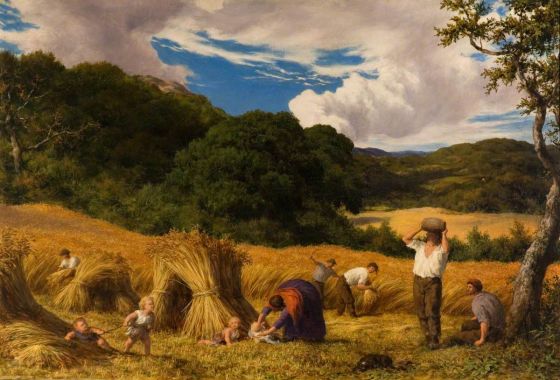Open-field Farming
Open-field farming refers to a historical period before the widespread use of surveyed and precisely demarcated fields. Unlike southern Europe, whose agricultural development had been established through villa estates, homesteading in the north began with fields that were cultivated by individual families and farmers. These divided their land into long, narrow strips that reflected the use of the ox-drawn plow, with the arrangement of these strips being often irregular or based on local community practices.
Contents
This disordered arrangement still prevails throughout much of the world, occurring in Type-7 and type-6 hex. However, in more populated areas, a combination of economic, social and technological factors would serve to produce a more rigorous system of land use.
Irregularity
Boundaries between farms were often determined by natural features like streams, rivers, trees or large convenient stones, as well as by oral agreements. As the best land was chosen, as near as could be using little more than a homesteader's eye and past experience, the result was a fragmented rural setting subdivided by stretches of hinterland. Good grazing areas between these farms were sometimes designated as common land, which later would cost a fee to use but in the beginning were mere conveniences. Collective use led to the acquisition of "customary rights" through inheritance and tradition, so that families for generations would bring their animals to the same fields year after year.
Even in those areas created according to the villa system, Roman land management and surveying techniques were allowed to lapse, leading to the fragmentation of estate villas into smaller, irregularly shaped plots. In most cases, crop rotation isn't practiced, so that once a given field is depleted of its nutrients, an adjacent area is cleared and ploughed. This also contributes to the scattering of fields, with open spaces of meadow and brush that were ploughed decades ago.
Evolution into Estates
The lack of cohesion, coupled with disputes over land that would produce periods of disunity and even blood feuds as population in these areas rose, led to integration into feudal estates. Increased pressure for more food asked for better management of the land; and as the land itself was seen as a fundamental source of wealth and power, feudal lords would grant large areas to vassals, who then consolidated areas of open fields into "hedged" spaces — physically demarcated by shrubs or trees planted in rows — that were also fenced and enclosed. Former residents were made into serfs, who were then bound to the land, having been legally granted to the vassals as well.
Yet those parts of the world where the amount of homesteaded farmland is too thin to be consolidated into estates continue the open-field system — though such still exist in the feudal hierarchy, for the residents must still pay taxes to a lord and are still often viewed as serfs.
See Bread (symbol)
